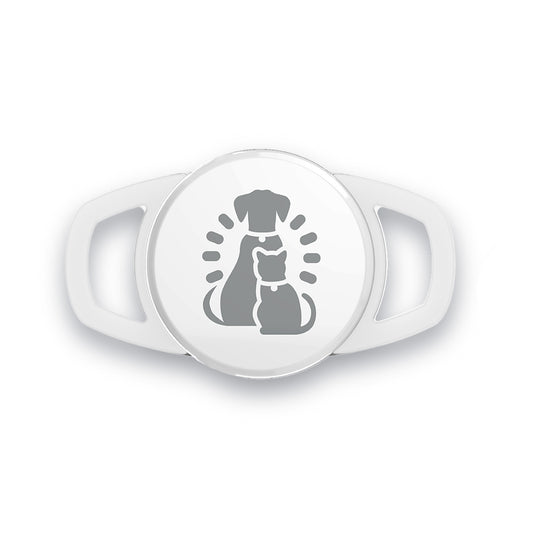Struggling to find healthy treats your pet will love? Discover the secrets to choosing snacks that boost their health and learn which ingredients to avoid!
When it comes to keeping our furry friends happy and healthy, snacks and treats play a vital role. However, with so many options available, it can be overwhelming to decide which ones are truly beneficial. Since treats make up only a small portion of your dog’s diet, they often aren't held to the same high standards as dog food. Unfortunately, some companies can exploit this and cut corners in their production.
In this blog, we’ll guide you through the essentials of what to look for in pet snacks and what to avoid, ensuring you make informed choices that keep your companion thriving and contribute to a healthy pet lifestyle.

What To Look For
Fruits and Vegetables
- Introducing fruits and vegetables into your pet's diet can provide a tasty and nutritious alternative to traditional treats and can help build better eating habits for your pet.
- Some vegetables that are safe for your pet to consume include broccoli, carrots, green beans, peas, zucchini, cooked potatoes (regular and sweet), cooked pumpkin, and cooked squashes.
- Certain fruits can also make great healthy pet treats including apples, bananas, blueberries, pineapple, raspberries, watermelon, apricots, cantaloupes, and more.
- Be sure to offer fruits to your pet in moderation, as many fruits can be high in sugar.
Meats and Fish
- Meat can be an excellent alternative treat for your pet, but it’s important to ensure that it is lean, unseasoned, and always cooked thoroughly. Some lean and protein-rich options include fish, beef, chicken, lamb, duck, turkey, and rabbit.
Healthy Ingredients in Store Bought Treats
- If preparing fresh produce for your pet feels overwhelming, there are plenty of store-bought treats made with healthy ingredients that can still support a healthy pet.
- Look for treats with a limited ingredient list that includes nutritious options like sweet potatoes and blueberries; these are typically easier to digest and packed with natural vitamins and minerals.
- Aim for treats that are high in protein and fiber while being low in calories. Freeze-dried treats are a fantastic choice, as the freeze-drying process helps retain both nutrients and flavor.
- Additionally, choosing treats that are free from gluten, soy, and wheat is recommended, as many pets experience gluten sensitivities that can lead to digestive problems.
- The country where a treat is manufactured can greatly affect its quality and safety. To ensure the best for your pet, opt for treats made with ingredients sourced and produced in the U.S. or in countries with thorough food safety regulations for pets.

What To Avoid
Unhealthy Human Food
- When choosing healthy pet snacks, it’s important to know that, while many human foods can be safely given in moderation, there are also several common items that can be harmful or toxic to your pets. While chocolate is a well-known danger, did you know that macadamia nuts and almonds can also be fatal to your pet?
- Additionally, onions and garlic can harm your pet’s red blood cells, potentially leading to anemia and even organ failure.
- Grapes and raisins are one fruit that should never be given to pets such as dogs or cats, as they can cause kidney damage.
- Other substances like xylitol (found in many artificial sweeteners), alcohol, and yeast dough can be toxic to pets, so it’s essential to keep these items out of their reach.
Unhealthy Ingredients in Store Bought Treats
- Be cautious of non-specific protein sources, which are often listed as “animal meal” or “animal by-products.” These can include various animal parts that are considered unsuitable for human consumption during manufacturing. Typically viewed as low-quality ingredients, these protein sources provide minimal nutritional value.
- Avoid treats that list synthetic preservers such as butylated hydroxytoluene (BHA), butylated hydroxy anisole (BHT), ethoxyquin, and propylene glycol as ingredients as they generally offer nothing to the treat except risk, which can ultimately affect your goal of maintaining a healthy pet. Ethoxyquin is one to especially look out for as it is associated with skin allergies, reproductive problems, and organ failure in pets. It is also illegal to use in human foods in the United States.
- Treats with unnatural colorings and food dyes are generally ones you should avoid as certain artificial colors, such as red 40 and yellow 5, have been linked to hyperactivity and cancer in pets.
- Steer clear of treats that contain sugar! While sugar isn’t toxic to dogs, consuming it in large quantities can negatively impact their health, leading to problems such as diabetes and heart disease.
Rawhide
- Rawhide treats may seem like an enticing option for keeping your pets busy while promoting dental health. However, these treats can pose more significant risks than you might realize.
- Rawhide treats are unable to break down in your dog’s digestive tract, which can lead to gastrointestinal blockages and complications.
- These treats can often be brittle as well, meaning that some dogs can quickly break them into small pieces, creating choking hazards and risks of intestinal perforation.
- Rawhide is often prone to contamination from harmful chemicals and bacteria during the manufacturing process.
- If you’re looking for safer alternatives to support a healthy pet, consider options like bully sticks, sweet potato chews, deer antlers, and pig ears.
It is best for your pet to eat foods and treats formulated specifically for their nutritional needs. However, if you do decide to allow your pet a human-food treat, just be sure to remember the rule that these should only account for less than 10% of their total diet, ensuring they still receive the necessary nutrients from their main meals.



